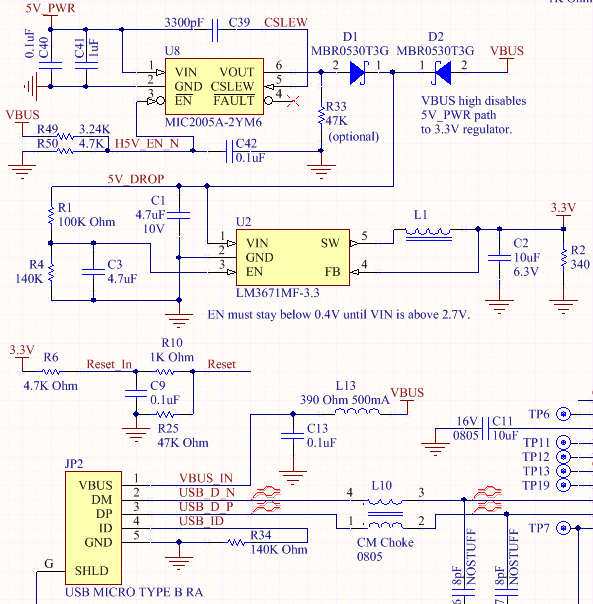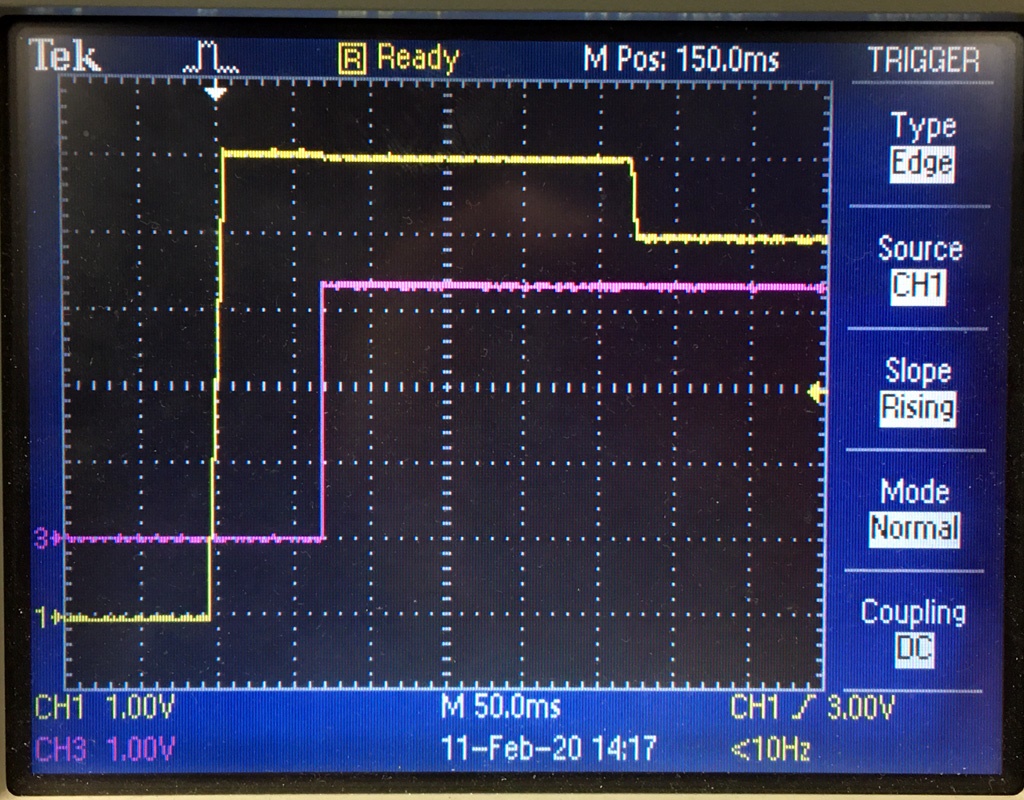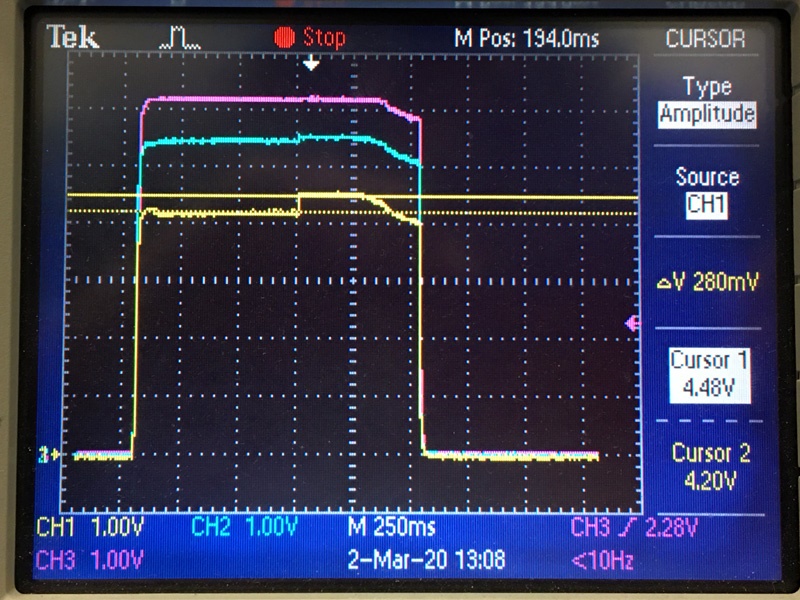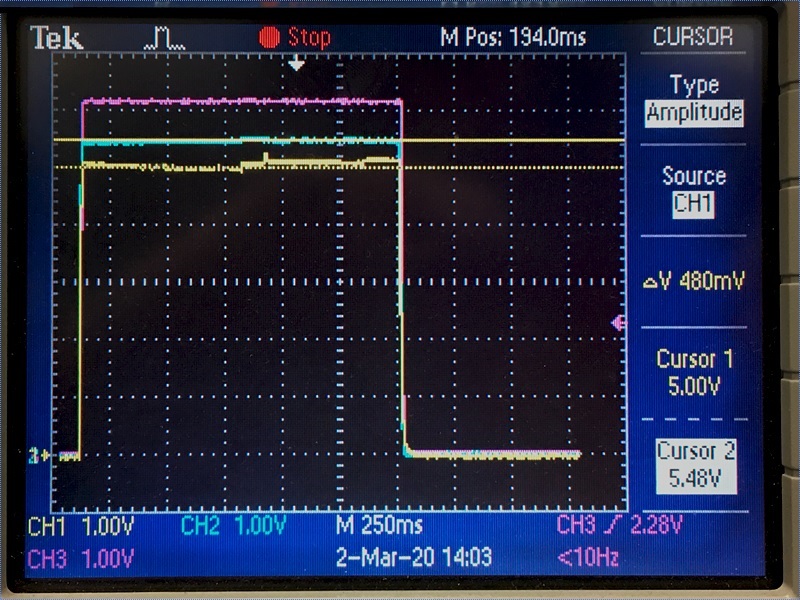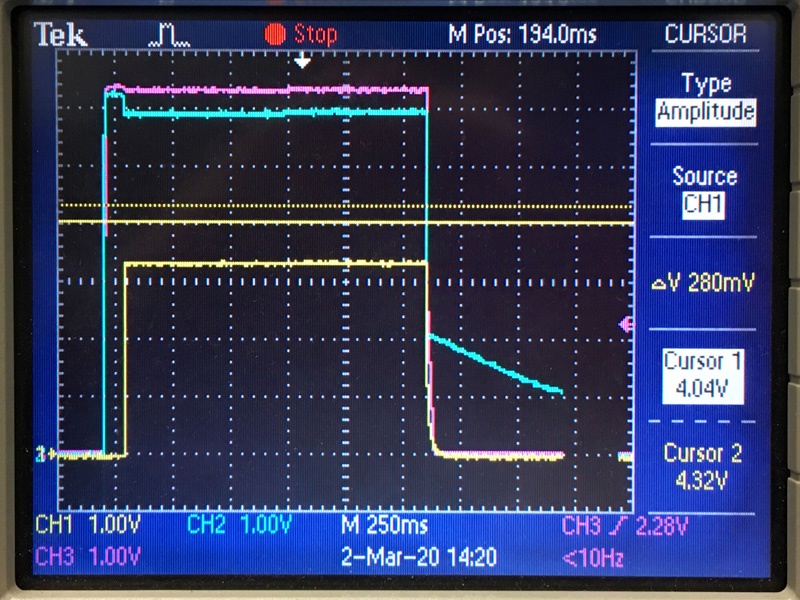Part Number: LM3671MF-1.8EV
We've been getting returns on some units after they've been in the field for ~6 months.
Many of them show that the LM3671 output is 4.1V instead of 3.3V. This in turn lies between the operating limit and absolute max for another chip in our design, so its outputs are burning out.
What could cause an LM3671MF-3.3/NOPB to put out 4V?
We have 2 possible 5V inputs (USB and HDMI 5V pins) that feed the regulator through diodes, so it should only see at most ~4.7V. We also have each of them tied to a CM1293A-04SO pin for ESD protection.
Worst case, we might have to redesign with a regulator with a wider input voltage range and higher ESD protection rating... but this product has already been selling for a few years.
If there is a flaw in our design, we would appreciate a fix, or at least some possible mitigation advice.
Thanks!



